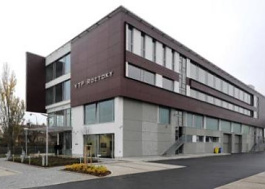
In Roztoky near Prague, a new scientific center has opened
 |
The scientific and technical park will be utilized by the Faculty of Mechanical Engineering at Czech Technical University (ČVUT) in collaboration with the business sector. Scientists will focus not only on the research and development of internal combustion engines but also on engines with alternative drives and the design of vehicle transmissions. According to the faculty's vice-dean Jan Macek, the main demands are on increasing the efficiency of engines and reducing emitted emissions. In the case of conventional internal combustion engines, scientists will aim to reduce their size. "For electric vehicles, this also means carefully monitoring their efficiency and addressing other problems related to the vehicle's energy balance, as heating is a significant issue for electric vehicles," Macek added.
The scientific park belongs to Trigema, which rents most of it to ČVUT. Approximately one-fifth, however, will be dedicated to private research. Soural expects that the investment in the project will pay off within 15 years. "Our expectation is that the project will work, as the Faculty of Mechanical Engineering at ČVUT is a very trustworthy and strong partner for us. The benefits of applied research are evident, as private companies are starting to get involved, wanting to benefit from this research," Soural told ČTK. One of the companies that may participate in the research is reportedly the German car manufacturer Porsche.
The building has five floors. The most important scientific workplace is located on the ground floor, where five labs for the research of internal combustion engines and a dynamometer are located, on which vehicles are tested. On the next floor, there is a research facility for transmissions, hybrid engines, and fuel cells. The rest of the building serves as office space and technical facilities for employees. There is also a fueling station located in front of the scientific workplace.
Some local residents protested against the construction of the scientific park because the building is close to a residential area. They were concerned about noise and a higher concentration of pollutants in the air. According to Macek, these concerns are unnecessary, as most of the pollutants are eliminated through the exhaust gas treatment system. "In addition, we have another exhaust disposal system in case an engine is tested without these devices," emphasized Macek. Architect Daniel Smítka previously told ČTK that the building is designed as a "house within a house" due to potential noise. As a result, all noisy operations are isolated from the external environment.
In the Central Bohemian Region, more scientific parks are expected to be established. ČVUT plans to build a University Center for Energy-efficient Buildings in the area of the former Poldi in Kladno. Scientists will test structural systems, materials, envelope structures, or heating systems for buildings aimed at reducing the energy demands of these buildings. A scientific park with the superlaser ELI for cancer treatment research and medical imaging diagnostics is set to be built in Dolní Břežany near Prague. The laser will also serve as a tool for the development and testing of new materials and for managing radioactive waste.
The English translation is powered by AI tool. Switch to Czech to view the original text source.
0 comments
add comment












